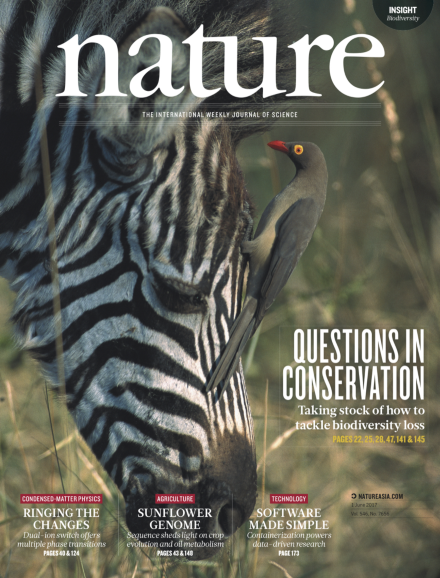Volume 546 Issue 7656, 1 June 2017
Editorial
World View
Seven Days
News
Correction
News Feature
Comment
Books & Arts
Correspondence
News & Views
Introduction
-
Biodiversity
Insight:
Review Article
-
Coral reefs in the Anthropocene
Collections:
Article
Letter
Toolbox
-
Software simplified
Collection:

